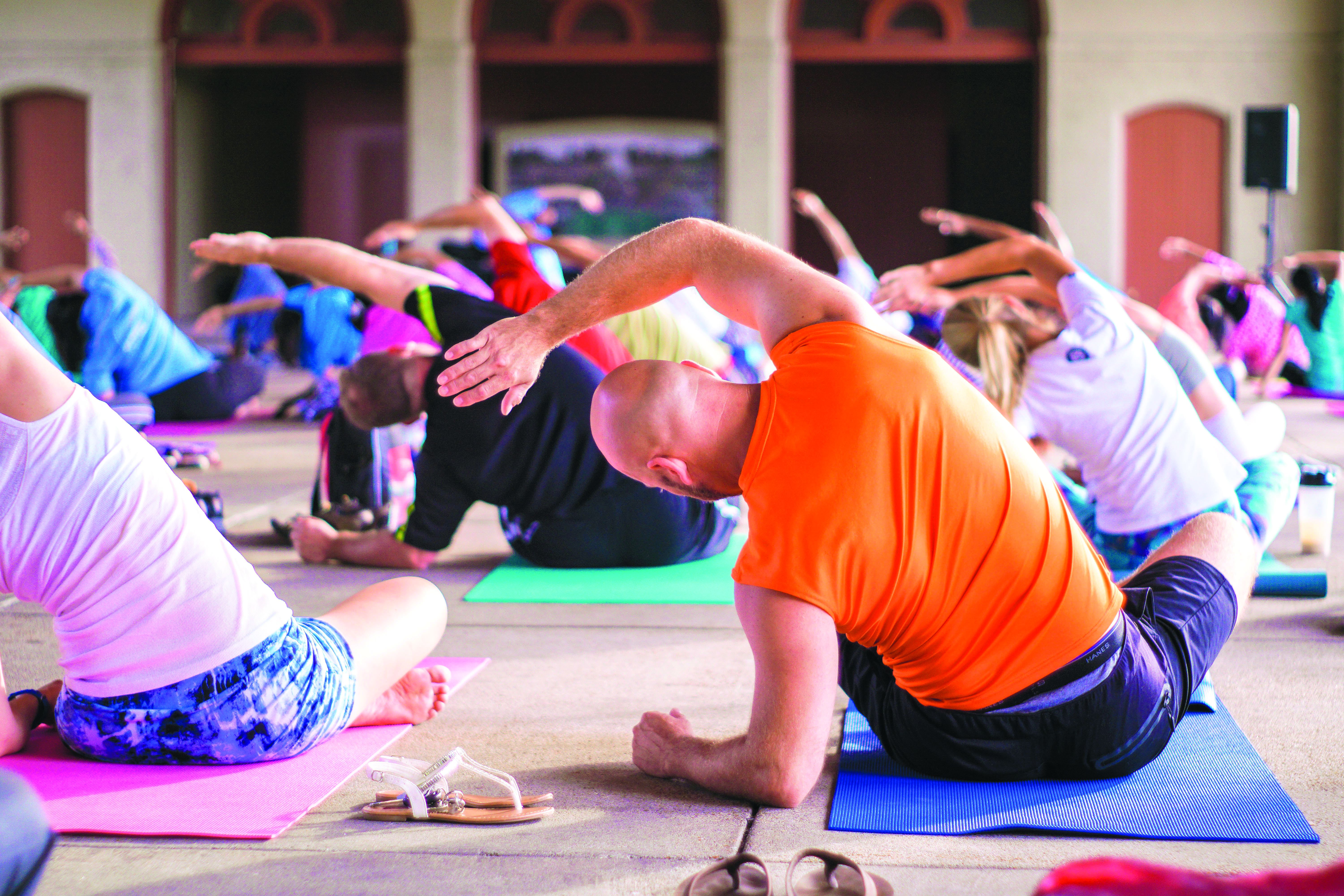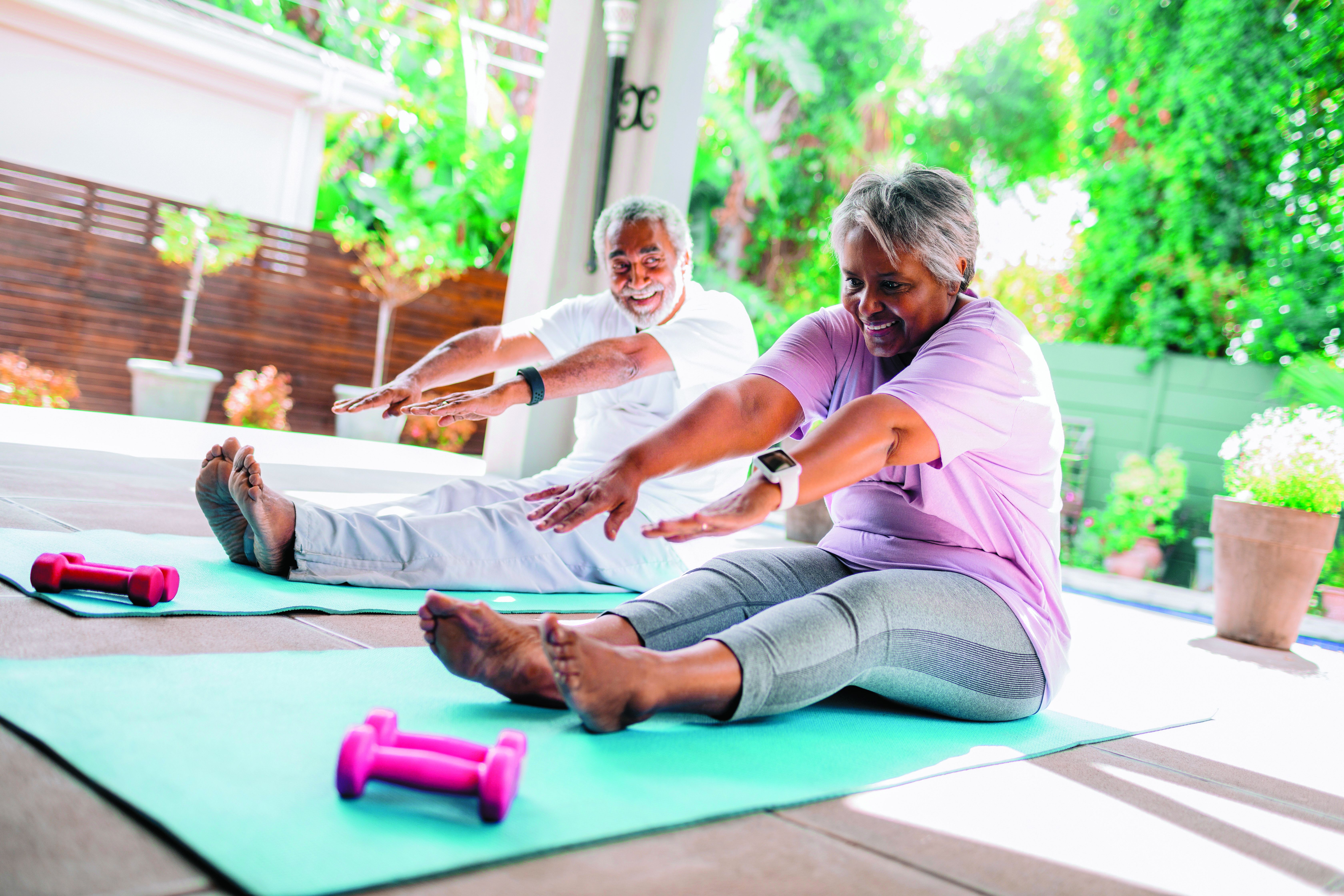So what are the best workout plans for you in your 20s, 30s, 40s, 50s, 60s, or beyond?
- 20s -
In your 20s, a strong fitness foundation is key to a long and healthy life. A combination of cardiovascular exercise and strength training is ideal. Aerobic exercise like running, dancing, martial arts and swimming are dynamic and can elevate your heart rate. Also, a strength-training regimen consisting of lifting weights or doing exercises that use your body weight for resistance, such as push-ups and lunges, is advantageous for a youthful 20-year-old. Aim for a load that you can comfortably perform and intersperse your strength training sessions with cardio workouts.
According to Lee Couret, Physical Therapist/Owner of Southshore Physical Therapy in Metairie, "Someone in their 20s may want to train for an Ironman Triathlon and get ready to devote 7-15 hours per week to preparing." He does address the different needs according to one's age when he notes that "a person in their 80s may have fitness goals like being able to get out of chair without using their arms, or improving their balance, so that they don't fall, or possibly showing the ability to play with or hold their grandchildren. I think that across all ages that cardiovascular exercise, strength training, and flexibility/stretching are all very important." Those adults who are in their 20s may find it easier to stick to a long-term exercise blueprint if they make healthy choices like going outside for a jog rather than plopping down on their couch with a bottle of wine
- 30s -
While in your 30s, you may want to diversify and round out your exercise program. If you focused on one sport or activity throughout your 20s, think about cross-training. As a cyclist, you might add swimming to your lineup, or a runner may incorporate strength training in his/her weekly exercise. This type of cross training is a great way to prevent imbalance and overuse injuries while providing a good mix of upper and lower body workouts. It's critical that your fitness regimen also include stretching and flexibility, as noted by Holly Holmberg-Javier, MPT, Physical Therapist of 23 years at Southern Orthopedic Specialists. "Although they don't think so, 20-30-year-olds need to stretch," she said. "Most people in their 80s don't think they need to strengthen, but all components are necessary whatever the age group."
Another important aspect of cross training involves core and balance work. "Core and balance training are necessary at all ages," said Holmberg-Javier, MPT, who is currently training to be a champion performance specialist. "This type of training can prevent back injuries. Core and balance training can help improve performance for [anyone, from] the athlete to the couch potato. And that athlete could be 20 years old, or they may be 70 years old."

- 40s -
Generally, in your 40s, you are near the end of raising your young kids and have settled into your job with extended desk time. Research shows that at age 40, a man's testosterone level starts to decline, as well as roughly 5 to 8 percent of his muscle mass per decade. Women also begin losing muscle more rapidly in their 40s. In order to preserve your lean mass and try to keep your metabolic rate high, weight training is highly recommended 2-3 times per week for both genders. "Weight training should be incorporated in all workouts after full growth is obtained," said Holmberg-Javier, MPT. "Most people between 30 and 50 years [of age] are sitting eight hours a day at work, two hours a day in the car commuting, and additional sitting time for meals."
Another aging side effect is joint wear and tear, with signs of osteoarthritis often surfacing in your 40s. Couret agreed, "Yes, osteoarthritis, which is the wearing away of the joints' articular cartilage and exposing the bone underneath, is common in our later years, whereas ligamentous joint injuries (the tearing of the ligaments
that hold our joints together) are more common when we are younger and more vigorously active."
Be conscious of how your joints feel during exercise. If your knees hurt, then swim, cycle, or try indoor rowing. A consistent exercise regimen with cardiovascular and weight training will help you prevent fat gain, preserve strength, and keep joints in check.
- 50s -
In your 50s, your focus turns more to your heart and core. The American Heart Association (AHA) recommends 30 minutes of aerobic activity five times per week to preserve your heart health as you age. Make sure to perform exercises that loosen tight muscles and sustain range of motion, which is crucial as you age. "The 50' plus population should focus on all of the above, cardiovascular exercise, strength training, and flexibility/stretching, with a goal of maintaining/improving health and functional level," said Couret. "One of the worst things that happens to our older population is that as they lose strength, their risk for falls goes up. For an older person, falling could mean breaking a hip and undergoing surgery. This also requires a hospital stay. The longer they are laid up in the hospital, the greater their chances for pneumonia, blood clots, and infection." Exercise options at 50+ may include yoga and pilates for strengthening your abs and lower back with mild to moderate cardiovascular activity.

- 60s -
Those of you in your 60s may want to concentrate on prevention and stabilization. As we age, staying strong can increase your odds of surviving a fall. Set your sights on strength with weights and good balance with fitness equipment such as the Bosu and the stability ball, which can help you avoid taking a tumble. In your 60s, your bones can become more fragile, so working with a certified fitness professional can safeguard you from getting hurt. The strength training regimen may consist of general overall conditioning using lighter weights, more repetitions, and resistance bands. Join a local gym or community center, which may offer a variety of group fitness classes geared for seniors like Zumba, Spin, and water aerobics. You may also enjoy the camaraderie in the classes and feel safe under supervision.
- 70+ -
As you move into your 70s and 80s, the question remains, "Are you exercising regularly?" Walking isn't the only activity that's safe for seniors 70 and up. You must also continue to work on strength, endurance, and flexibility. According to the National Institute of Health, you are never too old to reap benefits from exercise. "I think that resistance training is important for all ages," said Couret. "What is most important is the education-making sure the individual is using the appropriate resistance and with good form." Undoubtedly, resistance training, in the 70-year-old plus adult population, becomes essential, in order to maintain the muscle strength you have left. Always ease into your workouts with a proper warm up. And, if you're tired, take it slowly. If you experience pain or discomfort while performing the exercise, check your form and reevaluate your movement. If the pain persists, stop and consult your fitness professional and/or your doctor to determine how to proceed with your exercise regimen.
Remember any activity you do will be beneficial for your mind and body. Holmberg-Javier, MPT, emphasized, "No matter what the goal, usually stretching, strengthening, and balance activities must be included to optimize performance. If a person wants to to be able to stand for an hour and cook, or if a person wants to run trails, the body needs to keep the range of motion, gain strength in that motion, and stability. Remember, if you don't use it, you lose it."

